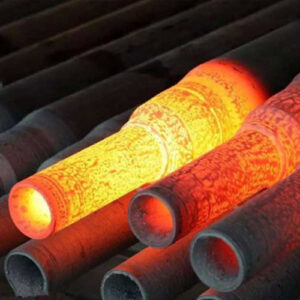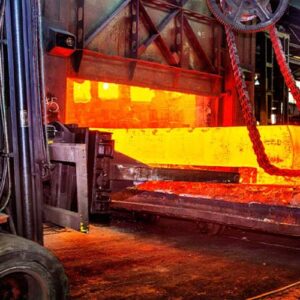Hot work tool steel is a versatile and crucial material in various industries, from manufacturing to aerospace, known for its exceptional heat resistance, wear resistance, and durability. However, selecting the right hot work tool steel grade is paramount to ensure optimal performance in specific applications. With a wide range of grades available, each tailored to different requirements, understanding the factors that influence grade selection is essential. In this comprehensive guide, we will delve into the intricacies of choosing the right hot work tool steel grade, considering alloy composition, properties, industry-specific needs, and practical selection tips.
1. Introduction
Choosing the appropriate hot work tool steel grade is akin to selecting the right tool for a specific job. It ensures that the material performs optimally under the given conditions, leading to improved efficiency and longevity of tools and components.
2. Hot Work Tool Steel: Composition and Properties
Alloying Elements
Hot work tool steel is meticulously crafted with a precise blend of alloying elements, including chromium, tungsten, molybdenum, vanadium, and others. These elements provide heat resistance, wear resistance, toughness, and strength.
Heat Resistance and Wear Resistance
Heat resistance and wear resistance are the hallmark properties of hot work tool steel, making it ideal for high-temperature applications where other materials may falter.
Toughness and Strength
Hot work tool steel possesses toughness and strength to withstand mechanical stresses, ensuring that tools and components maintain their integrity during operation.
3. Key Factors in Grade Selection
Application Requirements
The specific requirements of the application, such as operating temperature, load, and wear conditions, heavily influence grade selection.
Operating Environment
The environment in which the hot work tool steel will operate, including factors like humidity, corrosion potential, and exposure to chemicals, plays a crucial role in determining the appropriate grade.
Material to Be Processed
The type of material being processed, whether it’s metal, plastic, or other substances, affects grade selection. Different materials may require specific grades to avoid contamination or damage.
Tooling and Component Design
The design of tools and components, including factors like geometry, size, and complexity, can dictate the suitability of certain hot work tool steel grades.
4. Understanding Hot Work Tool Steel Grades
Common Grades and Alloys
An overview of commonly used hot work tool steel grades and their respective alloy compositions.
Properties and Performance Characteristics
A detailed examination of the properties and performance characteristics associated with different grades, including heat resistance, wear resistance, and machinability.
5. Industry-Specific Considerations
Die Casting
How die casting applications have specific requirements that influence grade selection, considering factors like molten metal temperature and pressure.
Forging
The challenges and considerations in selecting the right hot work tool steel grade for forging applications, where extreme temperatures and mechanical stresses are prevalent.
Extrusion
The importance of choosing the appropriate grade for extrusion processes, where materials are subjected to high temperatures and pressures during shaping.
Plastic Molding
The role of hot work tool steel grade selection in plastic molding applications, where maintaining precision and longevity of molds is critical.
6. Selection Guidelines
Consultation with Material Experts
The significance of seeking guidance from material experts and suppliers who can provide insights into the most suitable grade for specific applications.
Testing and Prototyping
The value of conducting testing and prototyping to assess how different hot work tool steel grades perform under actual working conditions.
Maintenance and Inspection
The importance of regular maintenance and inspection to ensure that the chosen hot work tool steel grade continues to meet the application’s needs over time.
7. Challenges in Grade Selection
Balancing Properties
The challenge of striking the right balance between heat resistance, wear resistance, toughness, and other properties to meet the demands of a specific application.
Cost Considerations
The role of cost considerations in grade selection, including the trade-offs between performance and budget constraints.
Changing Application Needs
How evolving application requirements may necessitate reevaluation and potential changes in hot work tool steel grade selection.
8. FAQs
Frequently Asked Questions About Selecting the Right Hot Work Tool Steel Grade
Q1. Can one hot work tool steel grade be universally suitable for all applications?
Hot work tool steel grades are highly specialized and tailored to specific applications. While some may have a broader range of applications, it’s crucial to select the grade that best aligns with the specific requirements of your application.
Q2. How can I determine the appropriate hot work tool steel grade for my application?
Consultation with material experts, conducting tests or prototyping, and considering factors like application requirements, operating environment, and material to be processed are essential steps in determining the right grade.
Q3. Is it possible to modify hot work tool steel properties to better suit my needs?
Modifying hot work tool steel properties can be achieved through heat treatment processes and alloy composition adjustments. Consultation with experts is recommended to explore customization options.

